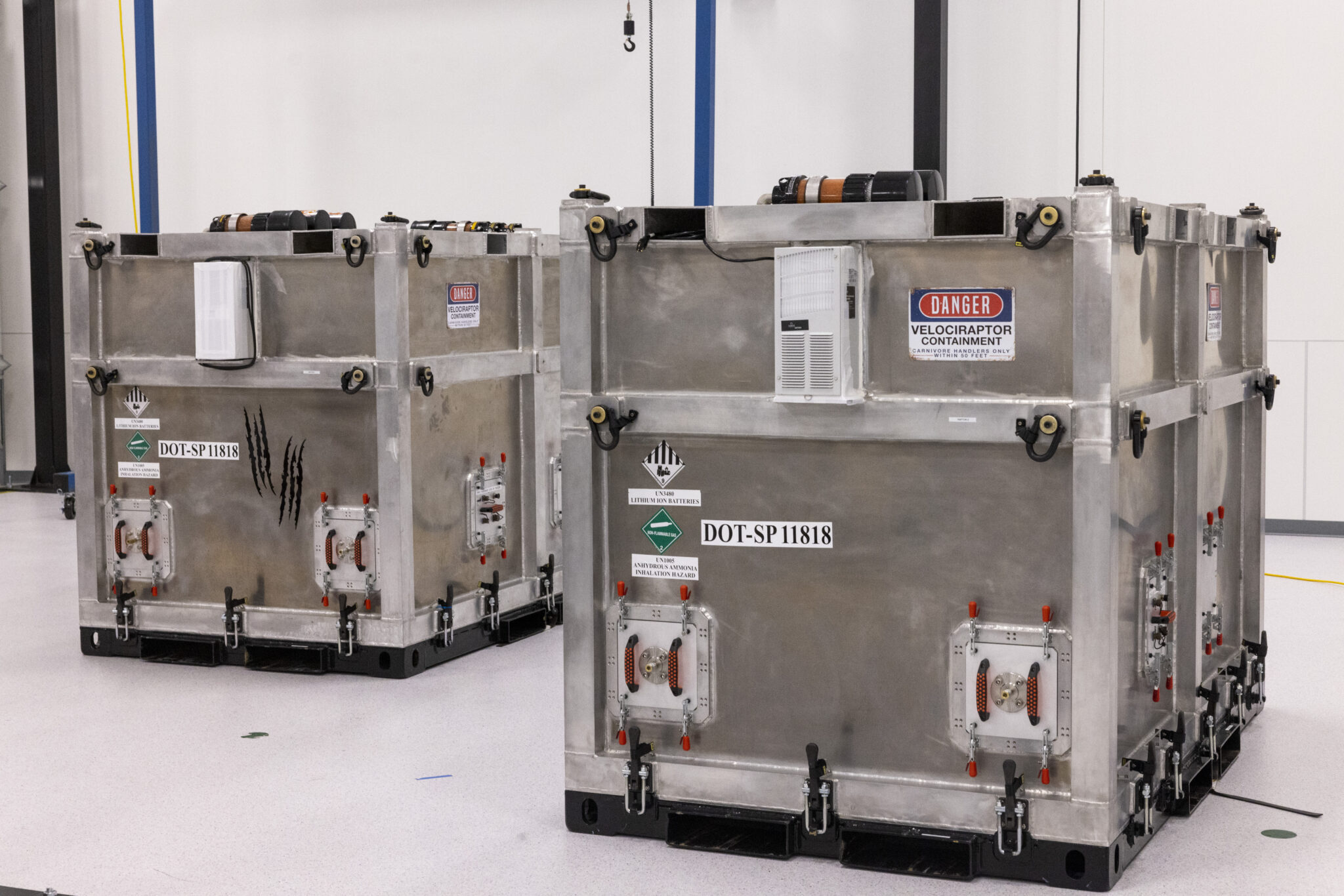18.11.2023

Containers holding KuiperSat-1 and KuiperSat-2 ahead of their launch Oct. 6. Credit: Amazon
TAMPA, Fla. — Commercial Project Kuiper satellites are entering production next month without design changes after two recently launched prototypes aced end-to-end tests, the broadband constellation’s vice president of technology said in an interview.
KuiperSat-1 and KuiperSat-2 successfully demonstrated fiber-like speeds after launching to low Earth orbit last month, Rajeev Badyal told SpaceNews, enabling work to start on more than 3,200 production satellites with similar architecture.
He said the tests put Amazon’s constellation plans on track to start launches in the first half of 2024, enabling beta services later that year with early partners that include telcos Vodafone and Verizon.
Badyal declined to discuss the number of satellites Project Kuiper aims to have in orbit for these early services, but said they would be grouped together to give potential customers seamless connectivity in certain areas.
“There’ll be plenty of satellites for our selected customers to start doing their use case tests on a continuous basis,” Badyal said, such as cellular backhaul.
Demonstrations using Project Kuiper’s prototypes since their launch last month were limited to 30-120-second contact windows as the two satellites passed over a test site in McAllen, Texas.
Although Amazon has not released performance metrics for these tests, Badyal said broadband speeds were comparable with terrestrial networks.
The company unveiled three prototype customer terminals early this year that boast speeds of up to 1 gigabit per second (Gbps).
During the week of Nov. 5, Amazon sent data traffic in both directions over its space network: from the internet over an Amazon-owned fiber network to a ground station, up to the prototype satellites, and then to a prototype customer terminal in McAllen.
In the first demonstration, engineers using the satellites logged into an Amazon Prime account, searched for a product on the internet retailer’s site, added it to a virtual shopping cart, and then checked out.
In the second, Badyal said engineers successfully started to buffer and then stream an ultra-high definition (UHD) 4K video to demonstrate the network’s high throughput and low latency.
The company also tested a brief two-way video call over Amazon Chime between the Texas test site and the company’s mission operations center in Redmond, Washington. This test required antennas connecting to satellites from Texas to simultaneously send and receive data, routed through terrestrial networks to and from Washington.
“Every single component is operating as designed,” Badyal added, “All the results are nominal or better.”
This is an “incredible milestone from Amazon,” he added, which just five years ago did not have any internal capability to design and build satellites.
Although Amazon has now finished core prototype tests, he said the company will conduct more experiments to ensure the constellation can hold up to the rigors of space.
“We want to see what the impact is of radiation on these solar arrays,” he said, “do they degrade or do they change performance similar to what we expect it to be?”
These experiments could take several months, and at the end Amazon will attempt to actively de-orbit the spacecraft within a year using onboard propulsion that Badyal is also performing well.
Amazon will start building commercial satellites at a facility in Kirkland, Washington, and next year plans to open up a satellite processing facility at NASA’s Kennedy Space Center, Florida, to ramp up deployment.
Production satellites will be the same size as the prototypes and there is no material difference between them, Badyal said, declining to give specifics.
Analysts expect Project Kuiper satellites will be more than 500 kilograms each, given the multibillion-dollar launch agreement Amazon has signed to use heavy-lift launch vehicles from United Launch Alliance (ULA), Arianespace, and Blue Origin.
The successful prototype tests are welcome news for a company that must deploy half the constellation — or 1,618 satellites — by July 2026 under deployment rules tied to its Federal Communications Commission license, and the rest by July 2029.
Amazon also has firm commitments for 77 heavy-lift launch vehicles.
However, apart from eight upcoming ULA Atlas 5 missions, the rest rely on rockets that have yet to enter service amid development delays: ULA’s Vulcan Centaur, Blue Origin’s New Glenn, and Ariane 6 from Arianespace.
Quelle: SN

